First pea harvest of 2020.
Heather brought home another rabbit today, so we have one buck and two does. This one might be pregnant.
We planted the rest of the garden today:
- Row 1: transplanted two tomato plants
- Row 2: seeded bush beans
- Row 3: transplanted 2 tomato plants
- Row 4: seeded corn, transplanted delicata squash, two watermelon plants, and pickling cucumbers
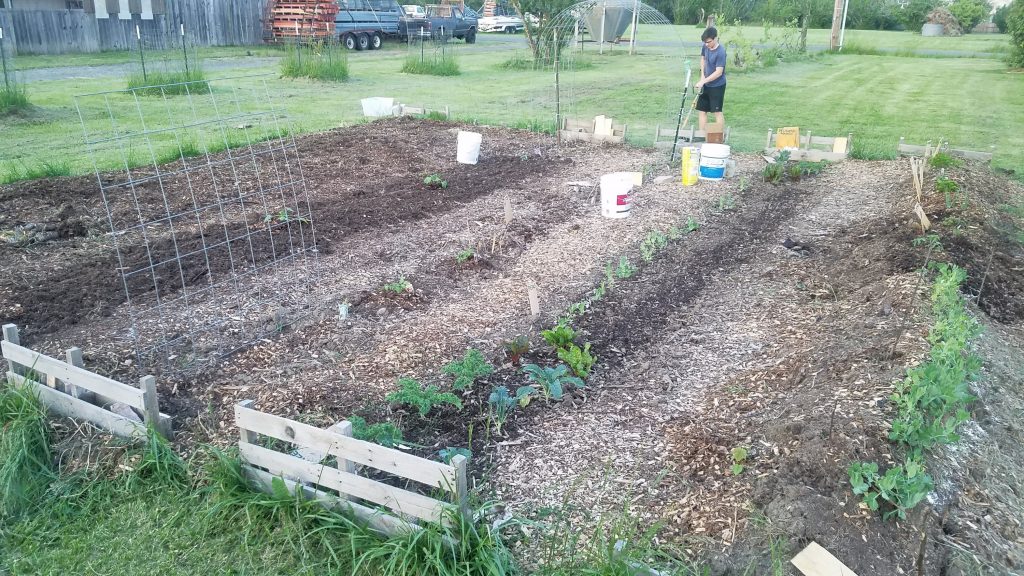
Grant transplanted a bunch of chives along the north wall of the carport.
Trying to keep up on what Heather has been planting…
The carrots she planted on April 11 didn’t sprout. She replanted today.
Half of the beans that she planted on April 17 didn’t sprout. She replanted today.
She transplanted a gypsy pepper plant today.
Miniature slugs have been eating several of our garden plants the past couple weeks. We have been picking them off and they seem to be diminishing, but not before doing a fair bit of damage to my peas.
Heather seeded pole beans.
A couple days ago we got a male duck on loan from our neighbors. We might have ducklings sometime.
Heather seeded beets and carrots today.
The peas we seeded on March 25 are starting to sprout.
The kale and chard are a bit yellowish but surviving. I think nitrogen availability must be lower when the soil is cold, perhaps due to decreased microbial activity.
The basil got killed by the cold nights, but most of the other herbs are doing well, especially both types of parsley.
The plum tree is done blossoming, the pear tree is in full blossom, and the young fruit trees are starting to grow again.
I transplanted kale and chard, and I direct-seeded Oregon sugar pod peas, which were really productive last year. This time, I only seeded one row, leaving more room for planting beans later.
Heather transplanted rosemary, parsley (curly and flat), sweet oregano, and Italian basil (with cloches covering the oregano to promote growth and basil to protect from frost).
I noticed chives growing next to the well.
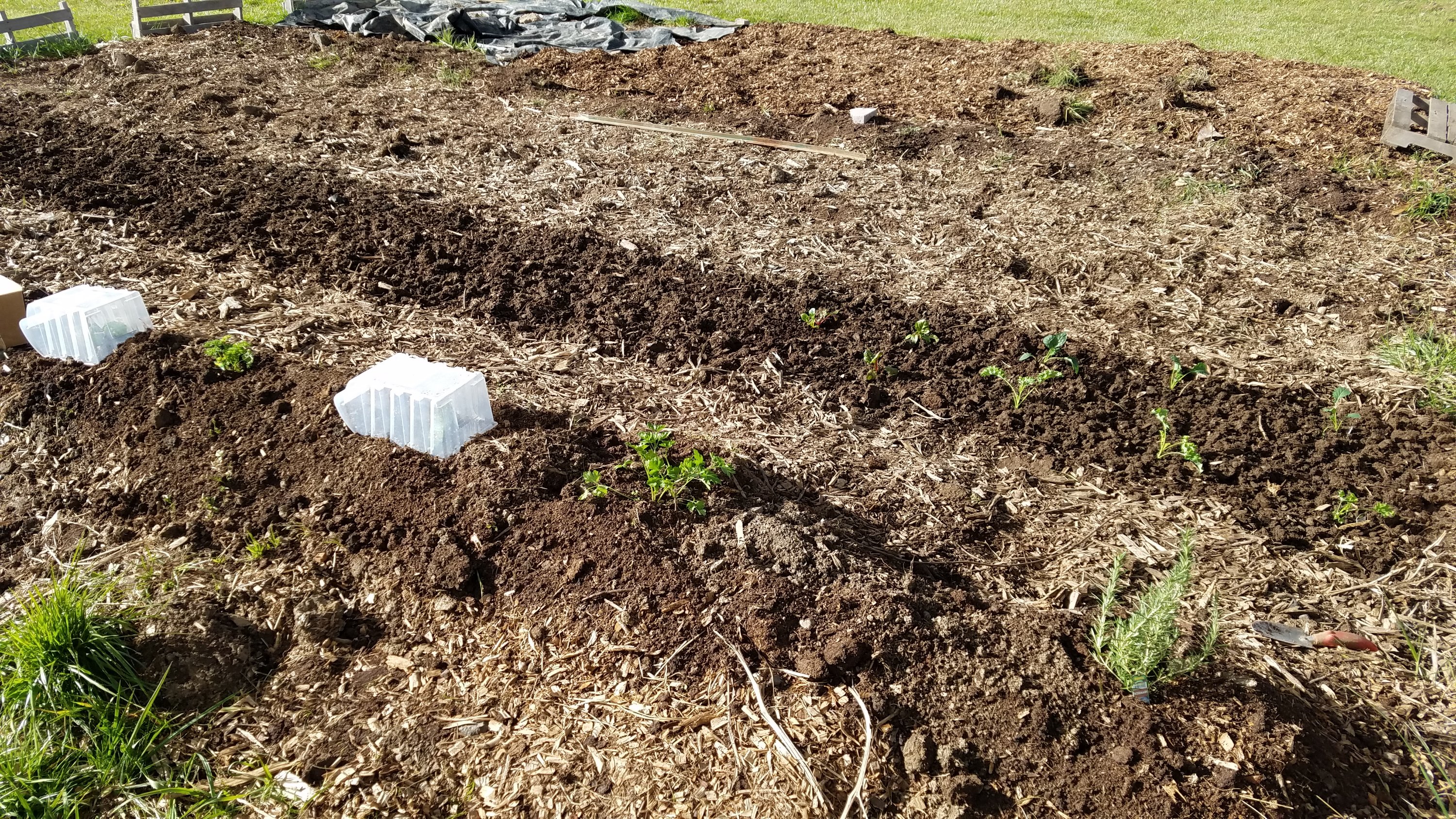
Yesterday, our friend help us get the town-behind lawn mower that our neighbor gave us running. A kit with a carburetor, spark plug, fuel filter, and air filter was $20. Next I need to buy new wheel bearings for it and for the small tractor trailer.
We changed the oil and spark plug in the Sears tractor.
The Case tractor is not doing so well. The past few weeks, it has been hard to start, which was not a problem before. I replaced the spark plugs today. Most of them were black with carbon. I also topped off fluids. It took about 3 quarts of fluid in the torque tube and a gallon of oil in the transmission. The 3-gallon cooling system took a gallon of coolant. I replaced the engine oil, and there was coolant in the oil. That probably means it has a bad head gasket. Also, yesterday the clutch started to fail. Today I had to use the hand clutch, and even then, I had to turn off the tractor to change gears. One of the back wheels still has a slow leak, too.
I re-routed the temporary pasture fencing on the north side of the barn so that I can access the tractor parking area again. The sheep will probably have that extra pasture area finished off in the next two weeks or so.
The chickens have finished off my kale. 🙁
A few months ago, we got to use a hydraulic log splitter to split a bunch of wood we had gotten from arborists. Today, we stacked it along the west side of the barn, probably about 1.5 cords. We don’t have a woodstove, though.
We also reapplied wood chips around the young fruit trees after adding some landscaping fabric.
The sheep have mowed the entire pasture down to stubble, due to our not implementing paddocks. Heather has installed some temporary fencing allowing them to graze the area north of the barn.
We haven’t gotten any chicken eggs for months. But they don’t have a proper chicken coop in which to lay eggs, nor are we giving them any feed beyond table scraps and what they find in the pasture.
Something happened to the carburetor on the John Deere mower and it will barely idle at full throttle. I fiddled with it a bit, then ordered a new carburetor. At about $15 to buy new, they’re hardly worth trying to troubleshoot.
The Case tractor has a rear left tire that loses air over the course of about a week. I need to see if I can remove the wheel so I can take it to a tire store for repair. Otherwise, it’s probably about $100 for a field service call.
We’re still getting some kale from the garden, but the chickens have been escaping the pasture now that we extended it for the sheep, so the kale isn’t going to last much longer.
Our squash harvest… not bad for being an afterthought planting.
Info I found said to leave squash on the vine as long as possible, but harvest before heavy frost.
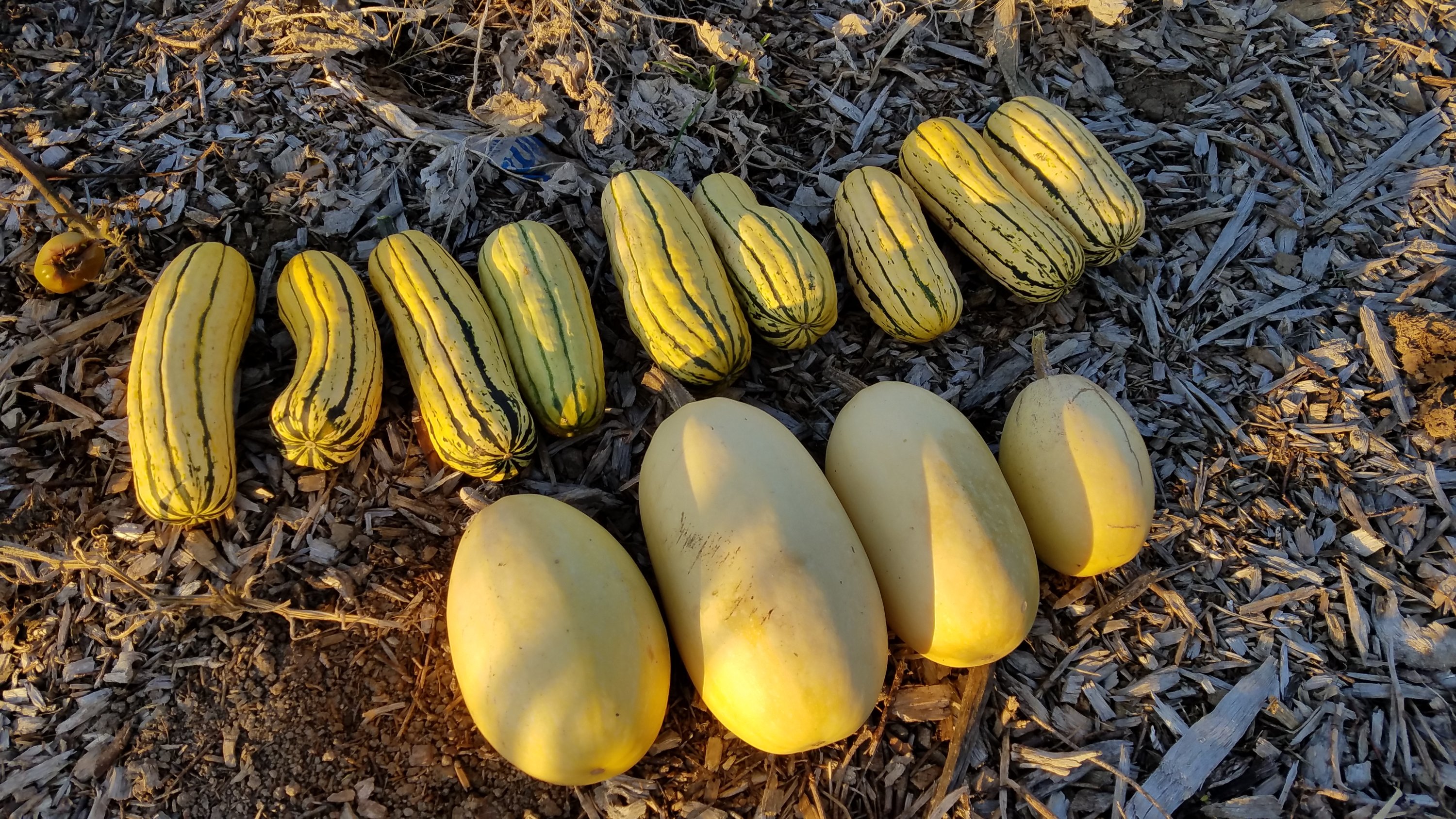
We had our first significant frost last night. Frost was in the forecast about a week ago, so we harvested our basil, but it was a light frost.
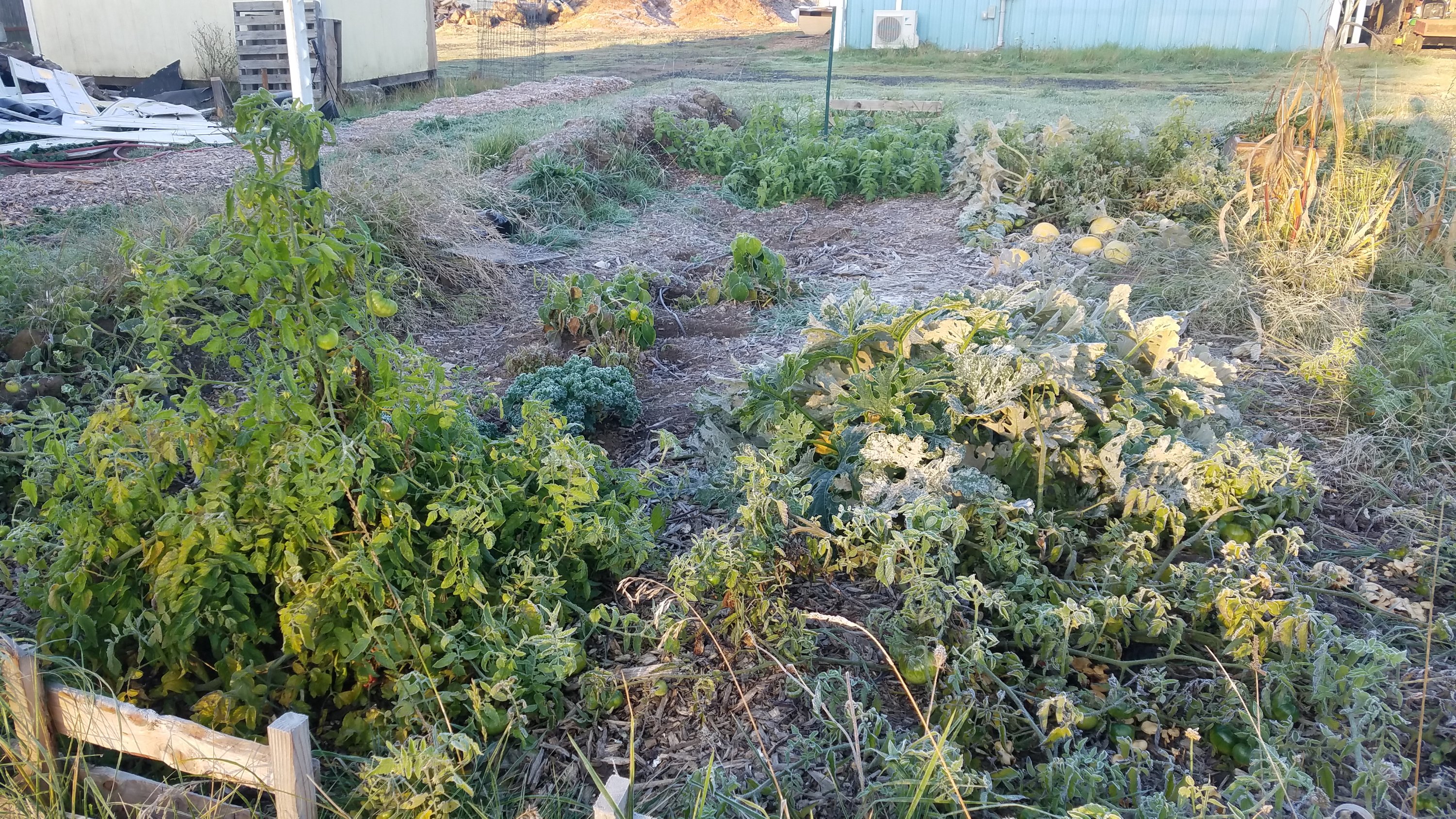
We left the garden in the care of Hannah for a week and came back to find destruction. My newly planted areas are completely dug up with huge holes, and the largest chard plant has been almost completely eaten. I’m guessing it’s the work of our non-egg-producing chickens. No yellow squash were picked all week, so I just had to pick five humungous ones that may be of no use to us.

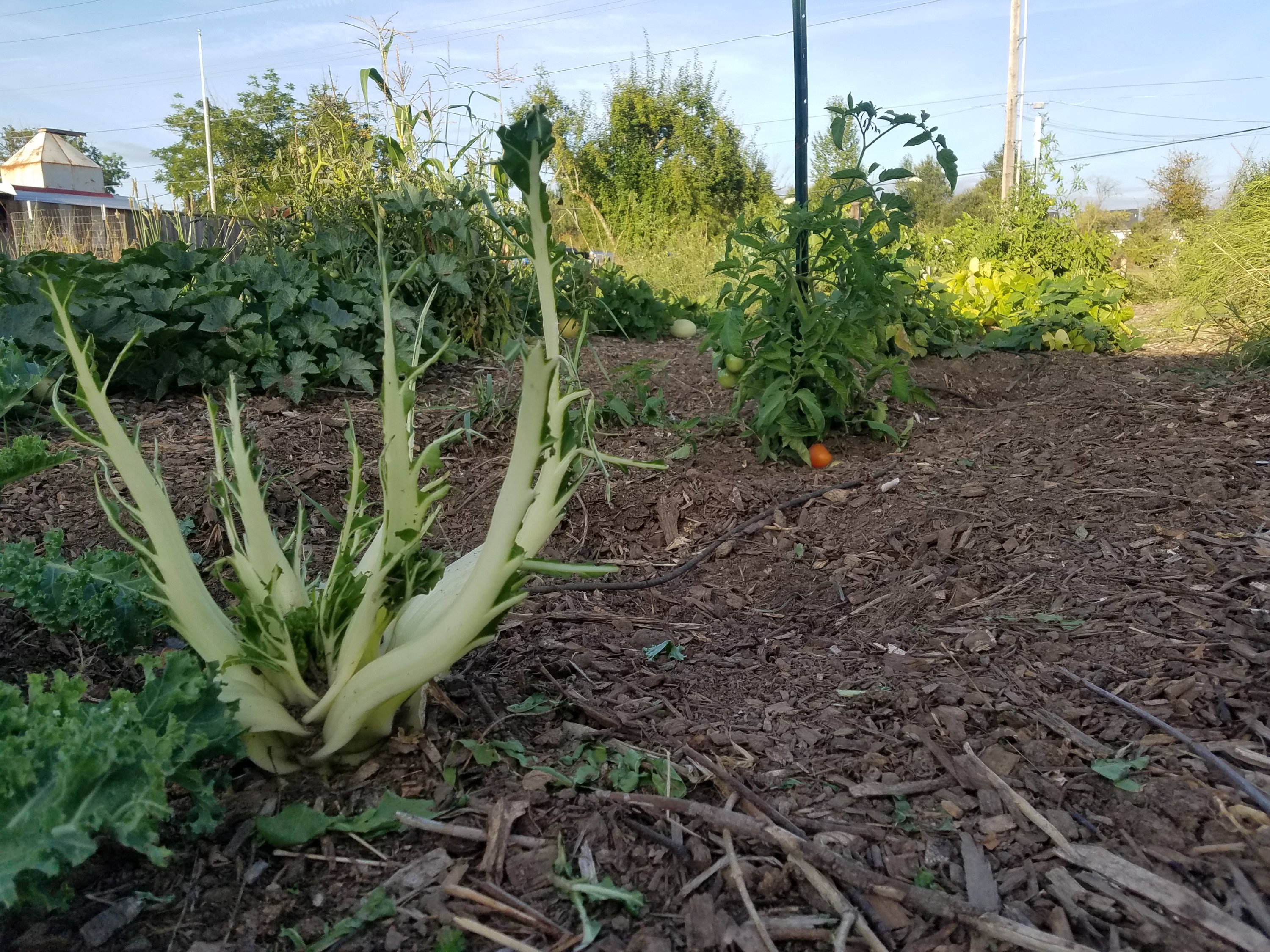
Got my first Mortgage Lifter tomato today.
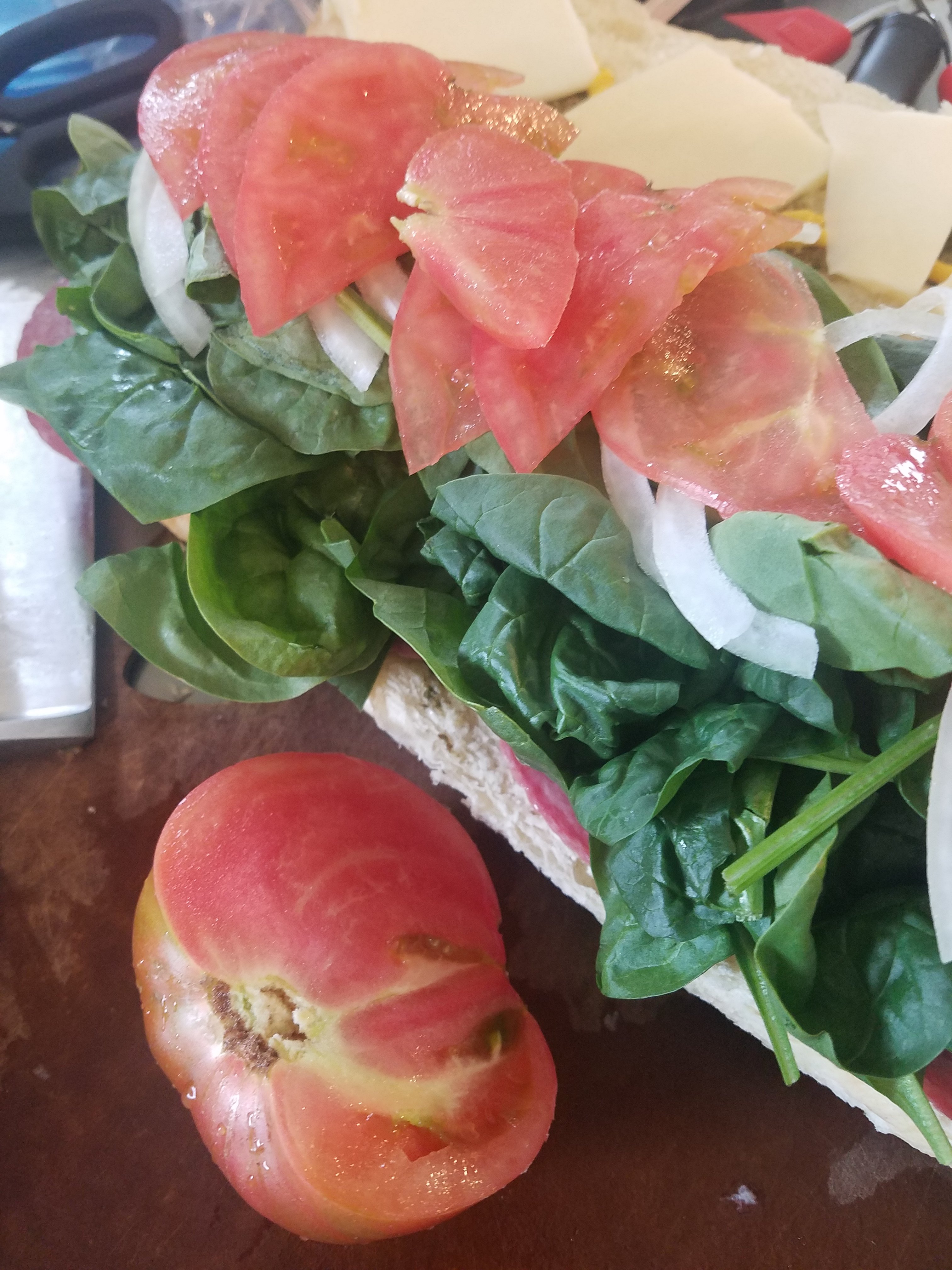
I harvested the last of my peas, and I’m going to remove them from the pods and dry them. I pulled out the plants, too. In their place, I planted (from west to east) rainbow mix carrots, danvers half-long carrots (north), chantenay carrots (south), some marigolds by the tomato plant, bloomsdale spinach (north), cylindra beet (south), calabrese broccoli (north), and chioggia beet (south). I also tried running some twine around my tomato plant on the east end to get some of the tomatoes off the ground. In doing so, we accidentally harvested some green tomatoes.
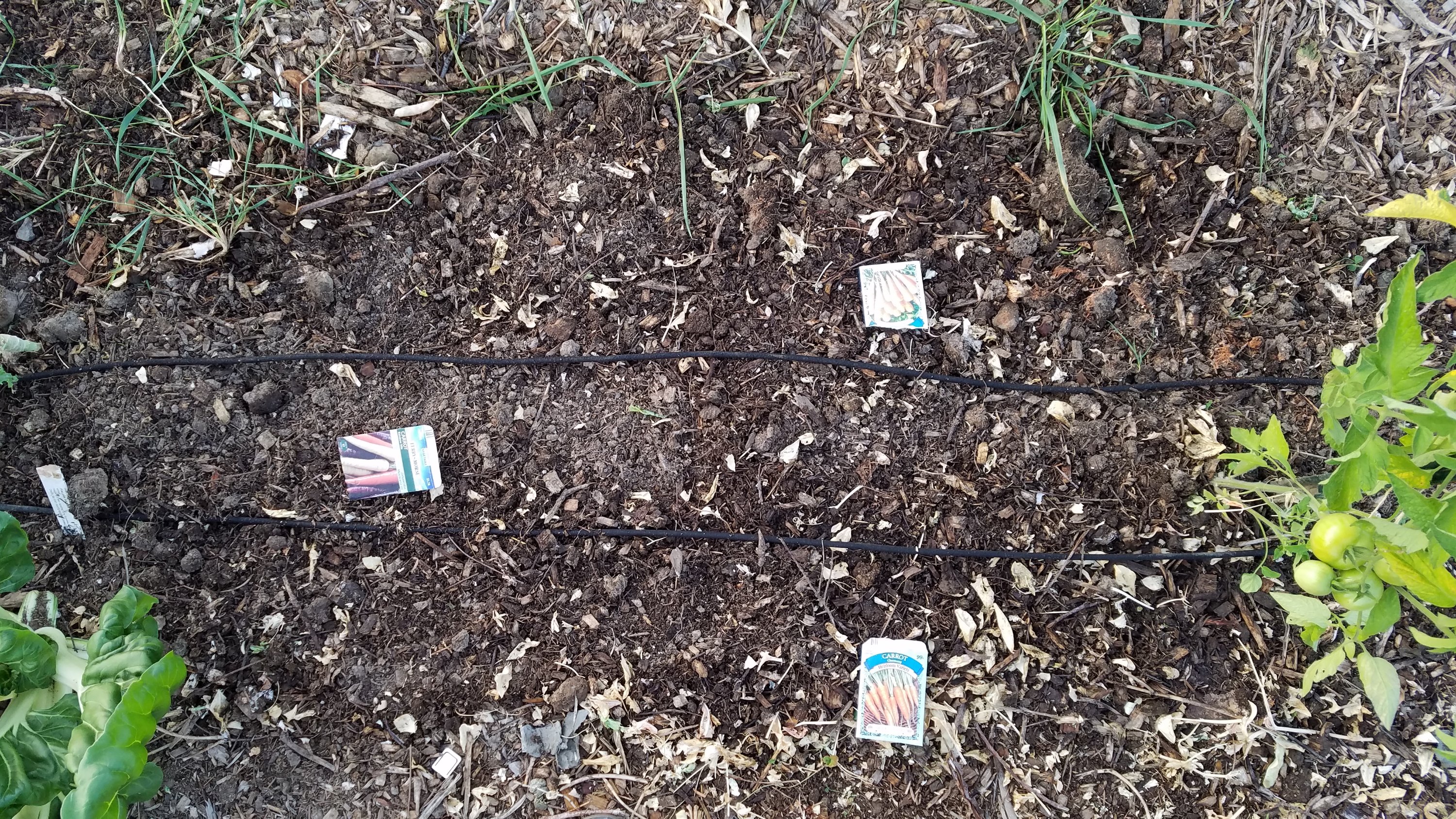
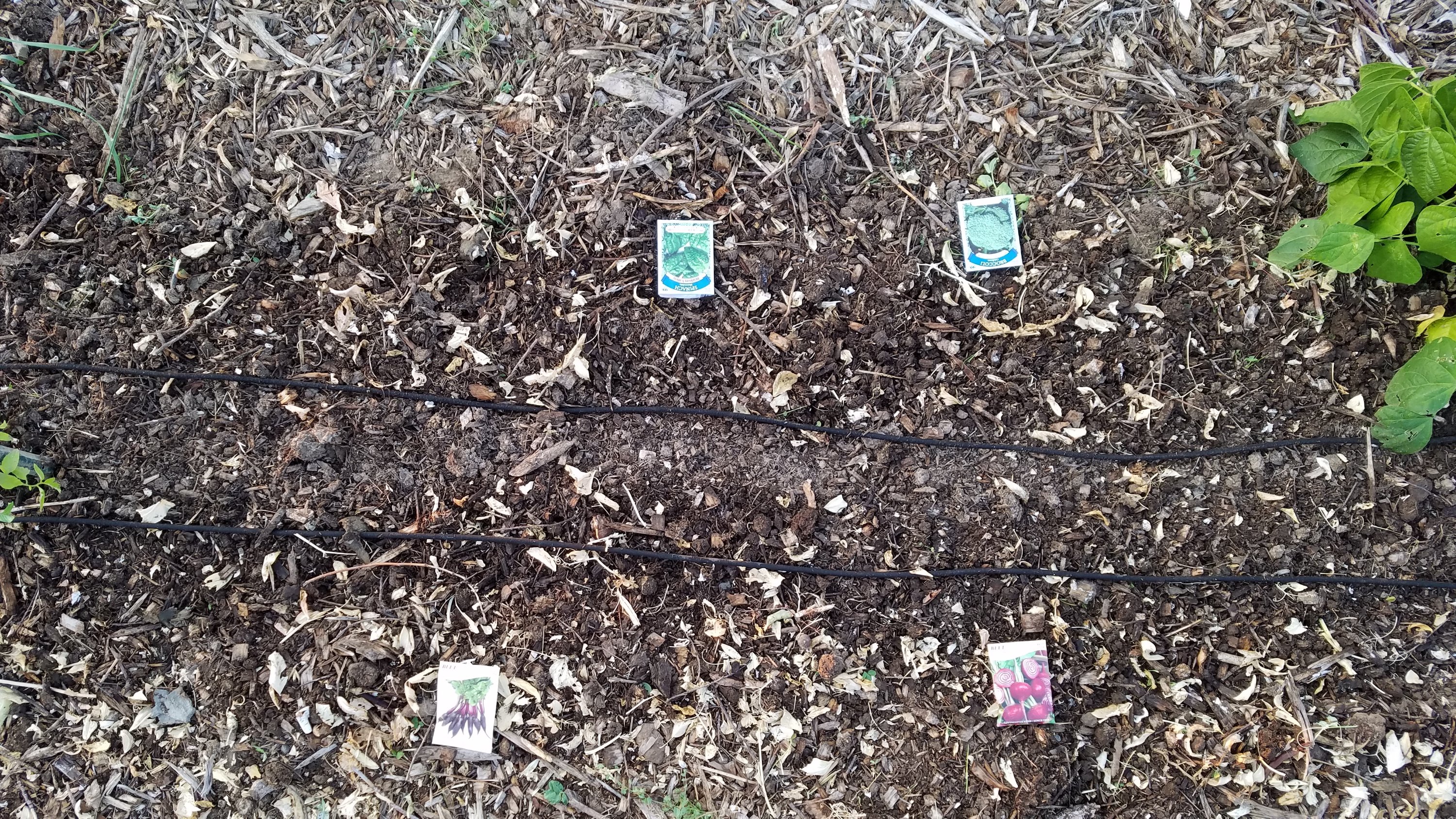
I got my first handful of beans a few days ago. We haven’t been able to keep up with the pea harvest of a pound every few days, so I’ll plant half as many next year. My kale and chard are very healthy and producing well. My Mortgage Lifter tomato finally has some blossoms that have become fruits. Overall, my garden row hasn’t needed much watering.
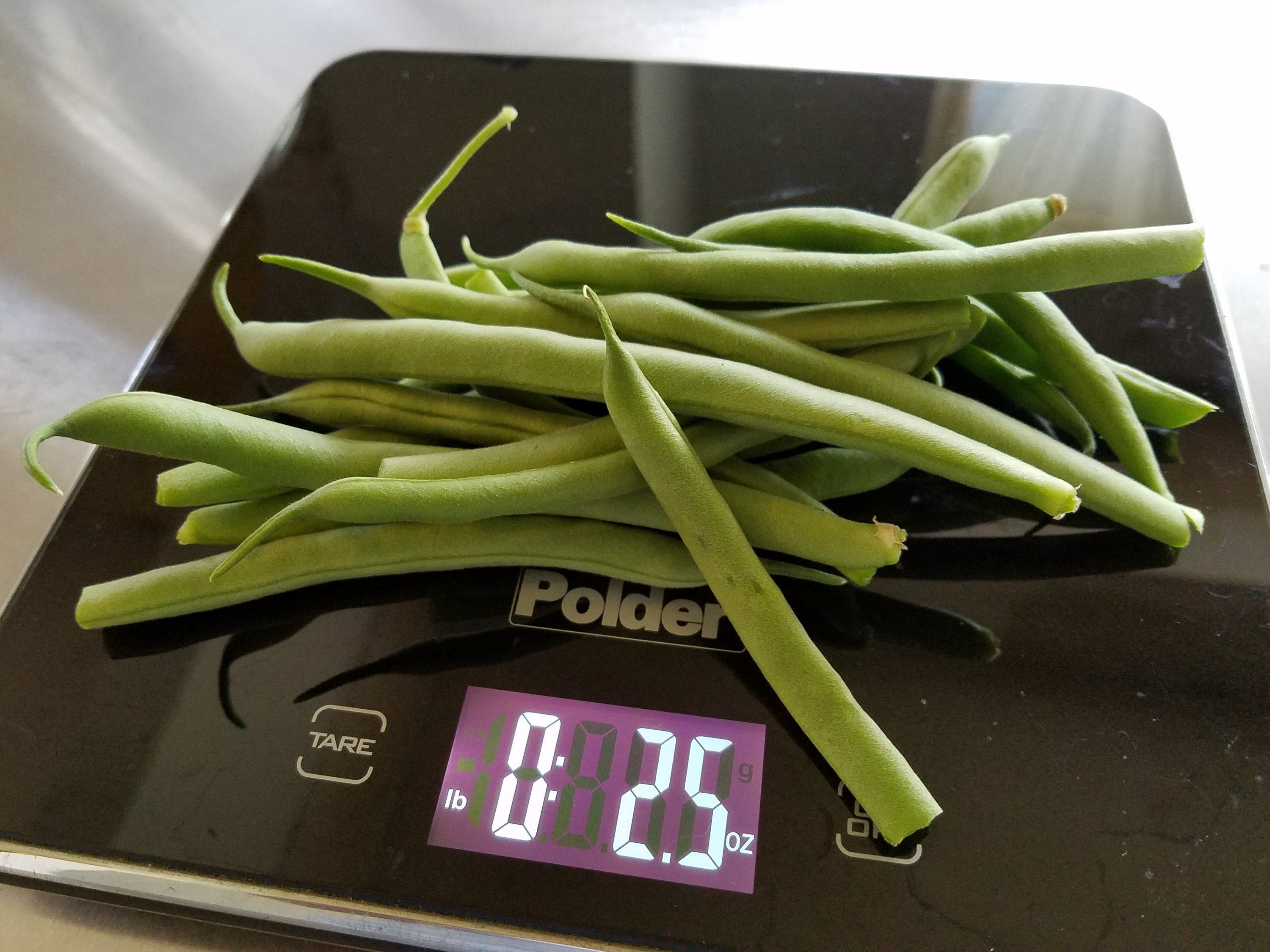
Four days since last picking, and I got 20 oz of peas this time.
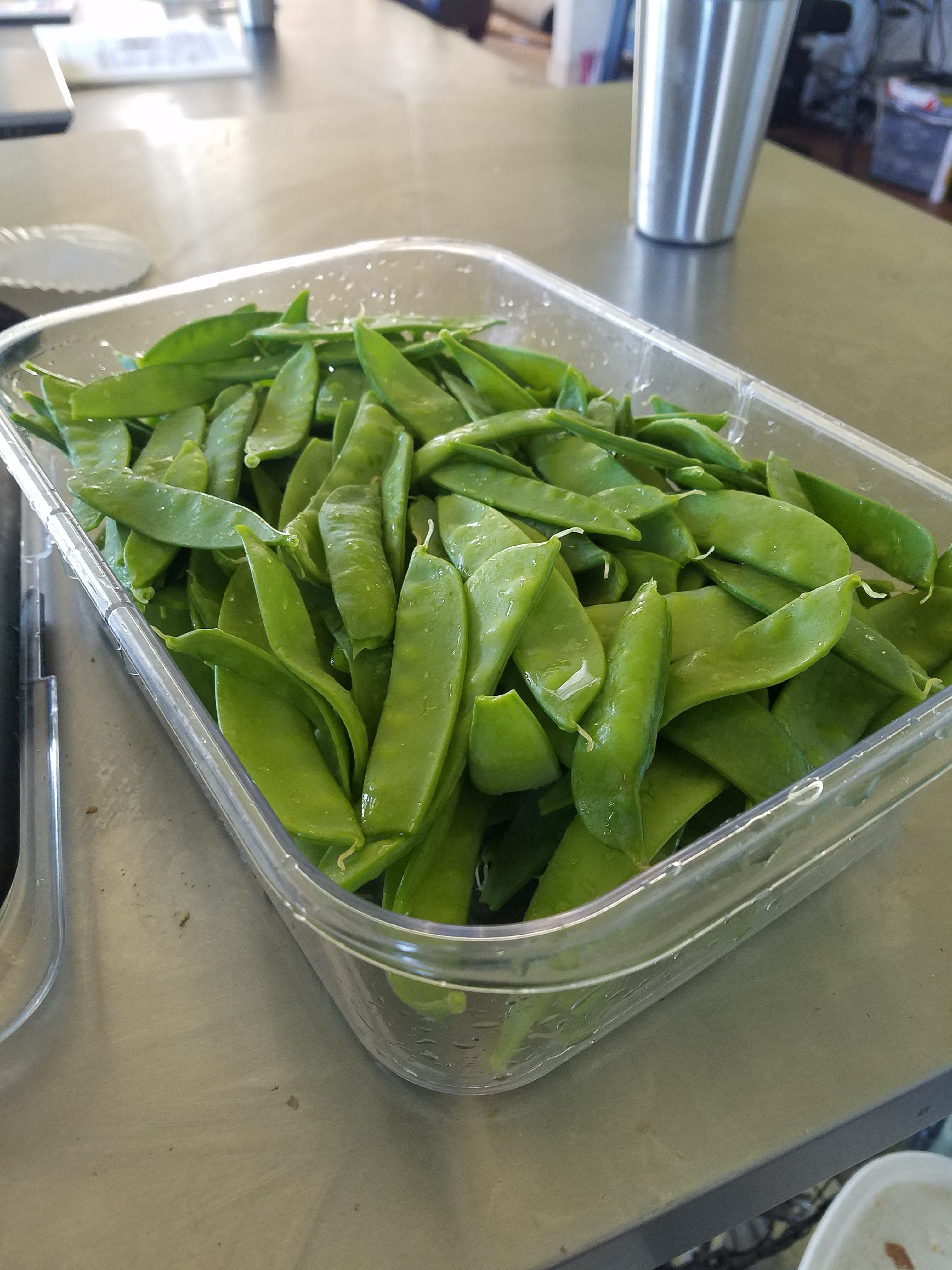
This my first pea harvest of more than just a few peas that I eat while in the garden. About 4 oz. My pea plants have been growing like crazy. I also got another 4 oz of kale.
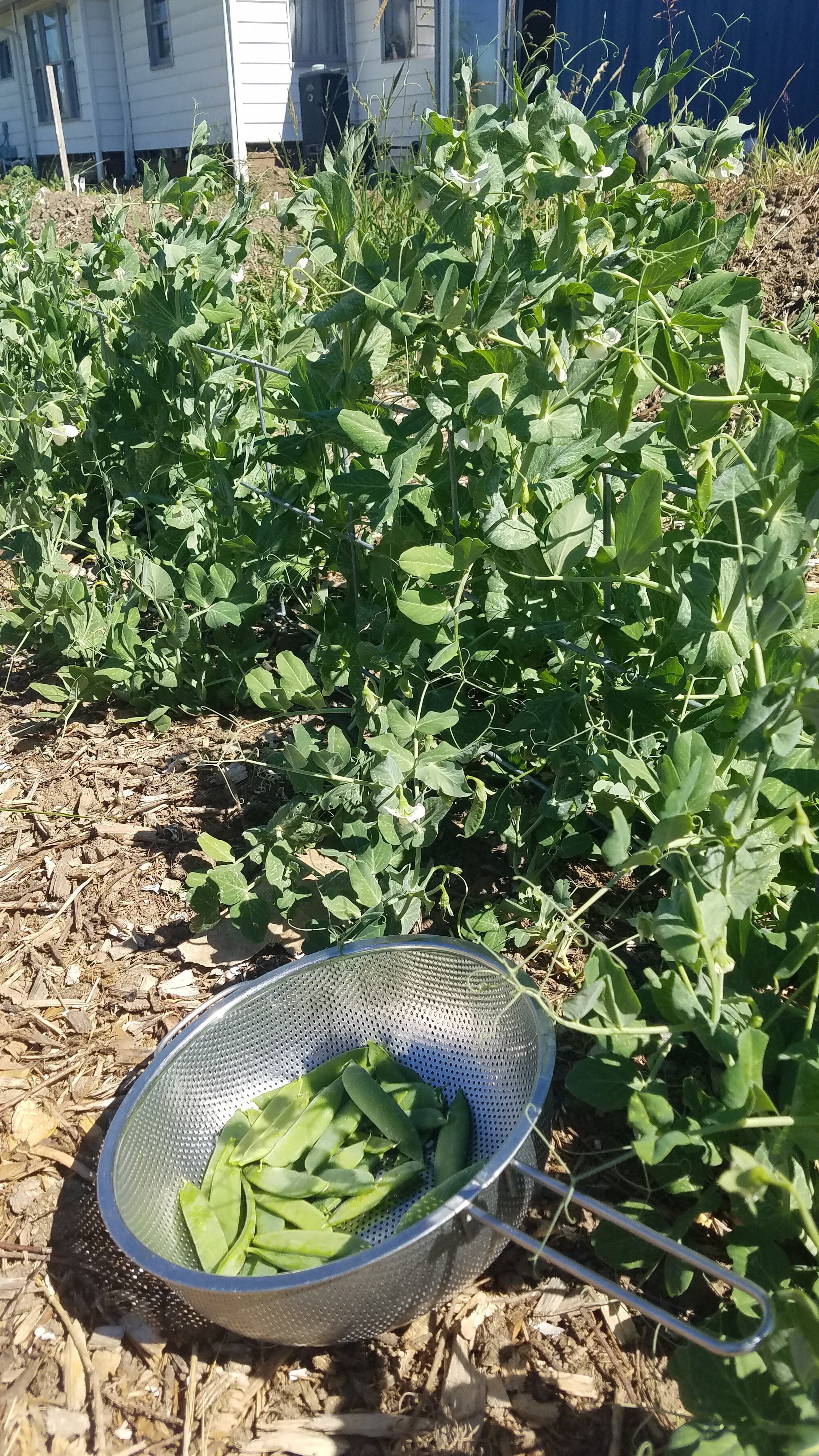
Our neighbors’ fields were cut today.
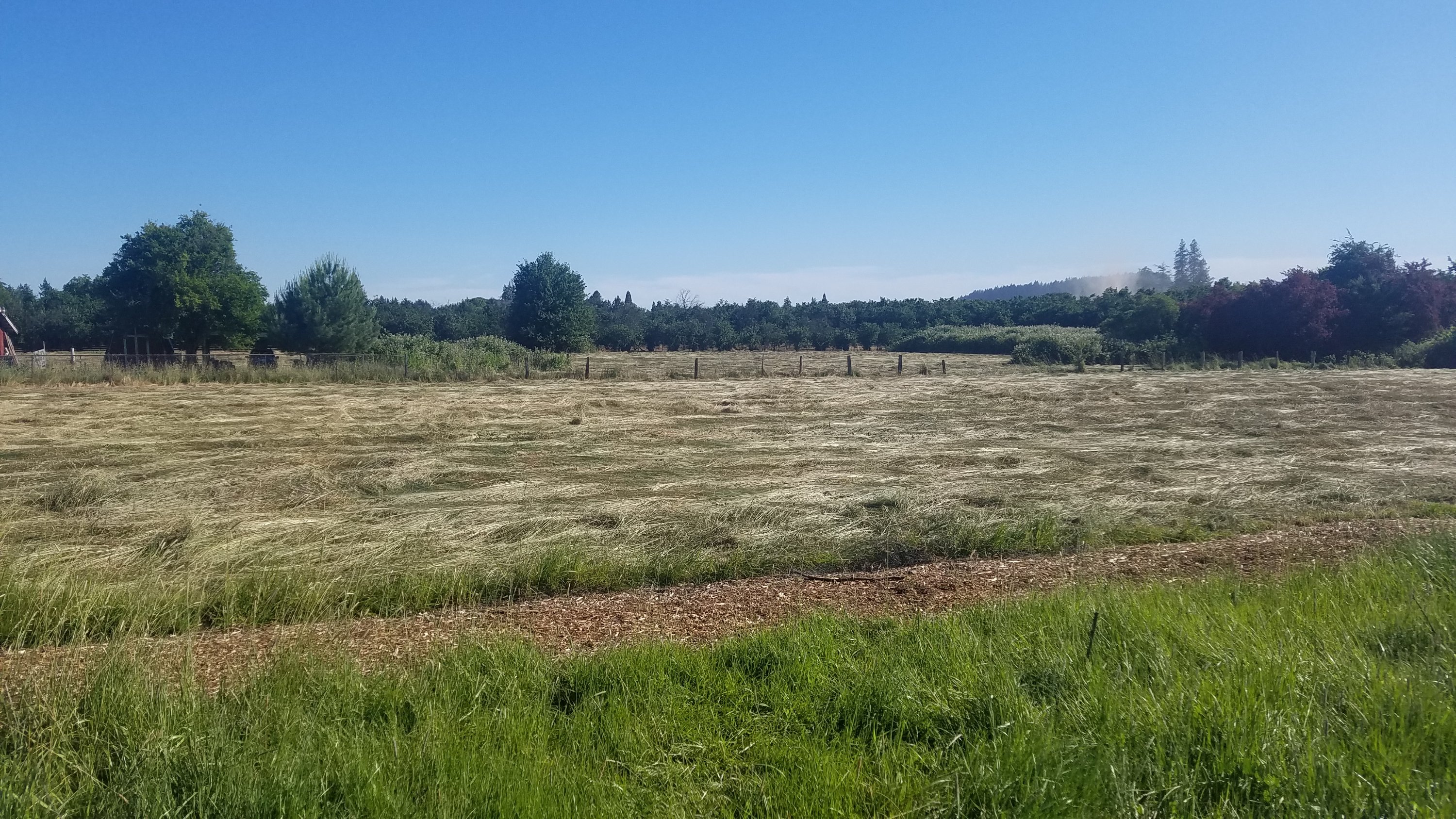
The peas that I direct seeded have taken off in the past week. They’re looking great. The beans have been up for a couple weeks. I planted 14 more beans today.
The tomatoes and squash plants have been doing poorly.
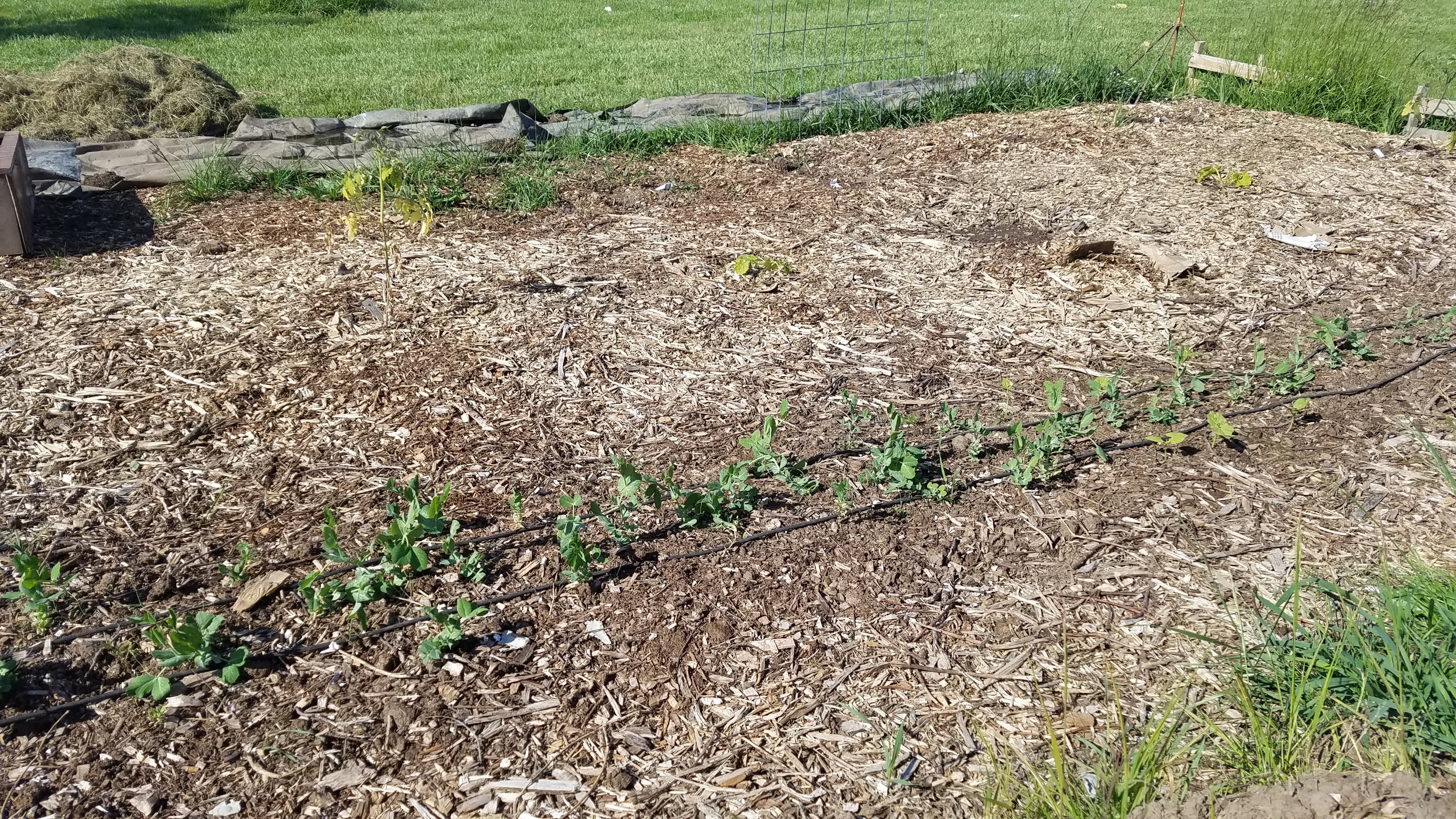
The NHS plant sale is a dangerous place of you’re wanting to have the value of your harvest exceed the cost of planting. We spent $31. I transplanted dwarf blue curled Scotch kale, Italian silver rib Swiss chard, and Mortgage Lifter tomato in my garden row (all heirloom), plus Delicata squash, yellow summer squash, and spaghetti squash in the row that we planned to leave fallow this year. Grant transplanted a black Krim tomato in that row, too.
Heather transplanted herbs out into the pasture along the fence.
I ran a 1/4-inch soaker hose on my row. It’s not very good. All the water leaks out within the first 15 feet–especially the first 5 feet. I might try a 1/2-inch soaker hose.

Frost took out the tomatoes the night after we planted them, and the chickens tore up about a quarter of my garden row.

